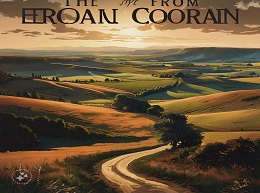The Grapes of Wrath

"The Grapes of Wrath" is a novel written by American author John Steinbeck, published in 1939. It is a powerful and influential work that explores the hardships faced by American farmers during the Great Depression. Here's a summary:
Setting:
The novel is set during the Great Depression and the Dust Bowl era of the 1930s. It begins in the Dust Bowl region of Oklahoma and follows the Joad family as they migrate to California in search of a better life.
Characters:
-
Tom Joad: The protagonist, a young man recently paroled from prison.
-
Ma Joad: Tom's mother and the emotional center of the Joad family.
-
Pa Joad: Tom's father, the head of the Joad family.
-
Jim Casy: A former preacher and close friend of the Joads.
-
Rose of Sharon (Rosasharn): Tom's pregnant sister.
-
Al Joad: Tom's younger brother.
-
Granma and Grampa Joad: Tom's grandparents.
Plot Summary:
-
Displacement from Oklahoma:
- The Joad family is forced to leave their farm in Oklahoma due to economic hardships caused by the Dust Bowl and the Great Depression. They set out for California in search of better opportunities and the promise of work.
-
Journey to California:
- The Joads face numerous challenges on their journey, including the death of Grampa Joad and the deteriorating health of Granma Joad. Along the way, they encounter other migrant families facing similar struggles.
-
Life in California:
- Upon reaching California, the Joads discover that the situation is not as promising as they had hoped. The job market is competitive, and the living conditions for migrant workers are often deplorable.
-
Exploitation and Injustice:
- The novel vividly portrays the exploitation and injustice faced by migrant workers. They are paid low wages, face harsh working conditions, and are often pitted against each other by powerful landowners.
-
Unionization and Casy's Influence:
- Jim Casy, the former preacher, plays a significant role in the novel. He becomes a leader in the effort to unionize the workers, advocating for their rights and dignity.
-
Tom's Evolution:
- Tom Joad undergoes a transformation from an individual focused on personal survival to someone committed to fighting for social justice. He becomes an advocate for the rights of the oppressed and disenfranchised.
-
Rosasharn's Tragedy:
- The novel includes a tragic event involving Rosasharn, which highlights the desperate circumstances faced by the Joad family and others.
-
The Closing Scene:
- The novel concludes with a poignant and symbolic scene involving Rosasharn that underscores themes of humanity, compassion, and resilience in the face of adversity.
Themes:
-
The Struggle for Survival: The novel depicts the harsh realities of economic hardship and the struggle for survival during the Great Depression.
-
Social Injustice: Steinbeck explores the exploitation and social injustice faced by migrant workers and the working class.
-
Unity and Community: The novel emphasizes the importance of unity and community among the oppressed, as seen in the efforts to unionize and stand against injustice.
-
Human Dignity: The characters in the novel strive to maintain their dignity in the face of dehumanizing conditions.
Significance:
-
Pulitzer Prize: "The Grapes of Wrath" won the Pulitzer Prize for Fiction in 1940.
-
Cultural Impact: The novel had a significant impact on public perception of the challenges faced by migrant workers during the Great Depression.
-
Controversy and Censorship: The book faced some controversy and was even banned in certain places due to its perceived socialist and pro-labor themes.
-
Film Adaptation: The novel was adapted into a highly acclaimed film in 1940, directed by John Ford and starring Henry Fonda as Tom Joad.
-
Literary Legacy: "The Grapes of Wrath" remains a classic work of American literature, studied in schools and universities for its social commentary and literary merit.
Steinbeck's "The Grapes of Wrath" remains a powerful and enduring work that addresses social issues, economic inequality, and the resilience of the human spirit. Its exploration of the plight of migrant workers during the Great Depression continues to resonate with readers and is considered a seminal work in American literature.












